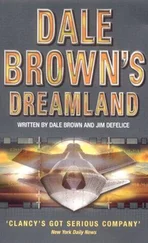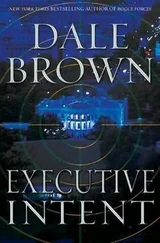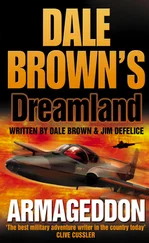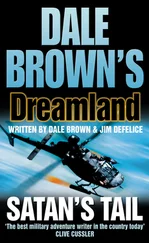Dale Brown - Sky Masters
Здесь есть возможность читать онлайн «Dale Brown - Sky Masters» весь текст электронной книги совершенно бесплатно (целиком полную версию без сокращений). В некоторых случаях можно слушать аудио, скачать через торрент в формате fb2 и присутствует краткое содержание. Жанр: Старинная литература, на английском языке. Описание произведения, (предисловие) а так же отзывы посетителей доступны на портале библиотеки ЛибКат.
- Название:Sky Masters
- Автор:
- Жанр:
- Год:неизвестен
- ISBN:нет данных
- Рейтинг книги:4 / 5. Голосов: 1
-
Избранное:Добавить в избранное
- Отзывы:
-
Ваша оценка:
- 80
- 1
- 2
- 3
- 4
- 5
Sky Masters: краткое содержание, описание и аннотация
Предлагаем к чтению аннотацию, описание, краткое содержание или предисловие (зависит от того, что написал сам автор книги «Sky Masters»). Если вы не нашли необходимую информацию о книге — напишите в комментариях, мы постараемся отыскать её.
Sky Masters — читать онлайн бесплатно полную книгу (весь текст) целиком
Ниже представлен текст книги, разбитый по страницам. Система сохранения места последней прочитанной страницы, позволяет с удобством читать онлайн бесплатно книгу «Sky Masters», без необходимости каждый раз заново искать на чём Вы остановились. Поставьте закладку, и сможете в любой момент перейти на страницу, на которой закончили чтение.
Интервал:
Закладка:
“Fox one, fox one, Bullet Two, ” Douglas called out on the interplane frequency. The big Sparrow missile slid off the rails and immediately went straight up, using its powerful firststage motor to gain maximum altitude. “It’s not gonna make it, ” Roberts said. He could feel an uncontrollable shiver coursing up and down his back. The Sparrow was launched near its extreme maximum range and it climbed too high, too fast, and he could see that the missile’s motor had already burned out. His AWG-9 radar showed the Chinese missiles already accelerating to six hundred knots, but the Sparrow was closing at only eight hundred knots because it had to climb so high to sustain its unpowered glide. “Shit, shit, it’s not gonna make it “Bullet Three has ajudy on the missiles, ” Douglas’ wingman suddenly shouted on the radios. “I got a lock-on! I’m going after them!” “Bullet Two is clearing off the missiles, ” Douglas radioed to the inbound Tomcat fighters as he pulled into a steep left climb and turned away from the Chinese fighters. “Bullet Two is clear.” The incoming Tomcat pilots immediately let loose with a four-missile barrage of Phoenix missiles-some designated for the Chinese fighters, others for the missiles that were now headed for the Ranger and her escorts. With their heavy missile loads gone, however, the Chinese fighters really began to move. Seconds after the missiles were in the sky, the AWACS reported the Chinese going nearly supersonic and making a sweeping left turn back to the northeast. “Bullet flight, be advised, Basket’s got music, ” the AWACS radar plane reported-they were picking up jamming signals from the enemy fighter-bombers. “Bullet Two, bandits at your ten o’clock position, twenty miles. Bullet Three, bandits at your six o’clock, ten miles.” Suddenly a huge explosion, followed by a ripple of orange and yellow fireballs, erupted in the sky ahead of Douglas as one of the Phoenix missiles found its target. “Splash one bandit, splash one! Bullet Two’s got the other one, ” Roberts cried out. The last remaining Chinese fighter had pulled directly into his line of fire as he made his postattack turn, and even at his present speed the tight turn bled off all his energy, which made the shot even easier. The steady warbling tone in Douglas’ headset was replaced by a high-pitched tone as the AWG-9 radar switched from range-while-search mode to pulse-Doppler-single-target-track mode for missile lock-on, and Douglas squeezed the trigger and let fly his third Sparrow missile. But the jamming from the Chinese attackers was too greatthe missile tracked well for only a few seconds before veering right and beginning a death-spiral to the dark waters below. There was still one enemy fighter out there. Douglas found himself in a near-panic. He had only one Sparrow remaining-his Sidewinders were useless against a target so far away-and no fuel to continue the chase. He was helpless. If he jammed in the afterburners to chase down the last fighter, he would run out of fuel long before reaching Ranger. The decision was made for him moments later: “Bullet Two, disengage, ” the AWACS controller called. “Bullet Six flight is at your six o’clock, thirty miles. Clear up and starboard and RTB; I show you four past your bingo.” Douglas checked their fuel, and it was worse than that-they were just a few minutes from emergency fuel-they needed an AK-6 tanker immediately. Douglas and Roberts could do nothing else but head back to Ranger and hope they still had a deck to land on as they listened to the chase unfold. . ABOARD BULLET THREE “Bullet Three, contact home plate immediately, ” the AWACS controller reported. Lieutenant Commander John “Horn” Kelly flicked his radios as fast as his shaking fingers could work the buttons. “Bullet Three, go.” “Bullet Three, take a shot and clear, ” the controller aboard Ranger said. “Five-two is ready to engage in sixty seconds.”
“Five-two” was CG-52, the USS Bunker IIill, an Aegis-class guided-missile cruiser-escort that could detect targets out to 175 miles and track and engage sea-skimming targets out to 40 miles; it carried SM-2 Aegis vertical-launch surface-to-air missiles. In addition, a special system called BGAAWC, or Battle Group Anti-Aircraft Warfare Coordination, allowed the Bunker Hill to remotely control the SM-2 Standard antiaircraft missiles aboard the cruiser Sterett and the Sea Sparrow missiles aboard the destroyers Hewitt and Fife, which were the Ranger’s other three escorts. Kelly’s RIO, Lieutenant “Faker” Markey, sang out immediately, “Got a judy on the missiles, Horn. . . I got ‘em locked up. Shoot away.”
“Good work, Faker.” On the Ranger’s tactical frequency, Kelly radioed, “Bullet Three, copy, fox. Suddenly, on the emergency Guard frequency, they heard, “Missiles! Bandits firing missiles! Horn, check six. . . !” The AAR-47 infrared warning receiver beeped just then, and several flare cartridges shot off into the night sky as Markey’s left index finger began to madly jab the “Flare” buttonthe supercoded electronic eye of the infrared warning seeker had detected the motor-ignition flash of a missile less than eight miles behind them. Kelly pulled the throttles to near idle power, rolled inverted, and pulled the nose to the ocean, trying to get his hot tail vertical and away from the missile’s seeker. “Find that missile!” Kelly shouted. Markey’s response was almost immediate: “I see it! I see it! High above us… it’s passing over us… A flash of light caught Kelly’s attention-to his horror, he noticed the flash was one of his own decoy flares. The hot phosphorus blob seemed to float just a few yards alongside the American fighter. It was bright enough to attract the enemy missile. “Stop ejecting flares!” Kelly screamed. “It’ll follow us down. 1” But it was too late. In his panic, Markey kept on ejecting decoy flares as the Tomcat continued its break and dive, and the trail of flares caused the Chinese Pen Lung-9 heat-seeking missile to snap down in the wake of the Tomcat, where it reacquired the F-14’s hot exhaust and finished its deadly voyage. The PL-9’s twenty-two-pound high-explosive warhead detonated on contact, shredding both engines instantly and destroying the Tomcat long before the crew had a chance to eject. ABOARD THE TICONDEROGA-CLASS CRUISER USS BUNKER HILL The Combat Information Center in an Aegis-class guided missile cruiser was like sitting in a giant big-screen video arcade. Four operators-the embarked group commander of the Ranger battle group and his assistant plus the TAO, or tactical action officer, and his assistant-each sat in front of two 42inch-square, four-color computer screens that showed the entire Ranger battle group, using computer-generated symbology and digitized coastal maps, creating a “big picture” of the entire battle area and highlighting friendly and enemy vessels and aircraft in relation to the fleet and any nearby political boundaries. The incredible MK-7 Aegis weapon system could track and process over one hundred different targets beyond five hundred miles in range by integrating radar information from other surface, land, or airborne search radars; the SPY-I phased-array radar on the Bunker Hill itself had a range of almost two hundred miles and could spot a sea-skimming missile on the horizon at a range of over forty miles. Aegis was designed to defend a large carrier battle group from dense and complicated enemy air and sea assault by integrating the entire group’s air-defense network into a single display and control area, and then providing long-range, high-speed decision-making and automatic-weapon employment for not only the Aegis cruiser’s weapon itself, but for all the ships of the battle group-Bunker Hill’s Aegis system could control the weapons of all the Ranger’s battle group. It all sounded complicated, very high-tech, and foolproofbut at that moment, staring down the barrel of a gun, it did not seem very foolproof. The Aegis air-defense system was designed to have the battle group commander and the ship’s commanding officer direct fleet defense from the Tactical Flag Command Center, but with an aircraft carrier in the group and a rather tightly packed deployment of ships, the Ranger battle group commander, Rear Admiral Conner Walheim, was aboard Ranger consulting directly with the carrier’s officers, so his deputy for antiaircraft warfare, Captain Richard Feinemann, was on the Aegis console. And because the Bunker Hill’s skipper preferred to stay on the bridge during such operations, the ship’s Tactical Action Officer was representing him on the Aegis console. Lieutenant Commander Paul Hart was the Bunker Hill’s TAC, and the Aegis system was his pride and joy-while the captain preferred to stay on the bridge during these engagements and monitor them on his ASTAB automated status board monitors, Hart was in his element in the dark, rather claustrophobic confines on the CIC. Feinemann was a lot like Hart’s skipper-he was a boat driver who had little patience for the dazzling and sometimes confusing array of electronic gadgets deep within the heart of a warship. He was an exdestroyer skipper and antisubmarine-warfare action group commander who had spent a length of time on shore studying newer antiair radar integration systems such as Aegis, but had little actual experience of it. Although Hart was the Aegis expert, Feinemann was still in overall command of antiair fleet defense and would command all antiair assets in the group from Bunker Hill. The big LSDs, or large-screen displays, were a bit intimidating for Feinemann, so he had his data-input technician give him a constant verbal readout of significant events on the screen while he tried to keep up. The data-input officer made a comment to Feinemann, prefaced with a short expletive, and the group AAW officer scanned the screen in momentary confusion-both because he couldn’t spot the event and because no one in BunkerHill’s CIC seemed very excited. “We’ve lost contact with one of our fighters?” Feinemann asked incredulously. “Yes, sir, ” Hart responded. “That B-6 must’ve got him before Bullet Three could take a shot. It was a long-range crossing snapshot, too-he must’ve been carrying PL-9 missiles.” Feinemann stared at Hart in complete surprise, wondering what in hell the young officer was babbling about. Hart continued. “Those C60 1 missiles got past both the Tomcats and the Phoenix missiles.” He turned to the tactical alert intercom and radioed, “Bridge, CIC, I show four inbounds, altitude seven hundred feet, speed five hundred fifty knots, bearing two-niner-seven, range forty-two miles and closing, Charlie-601 antiship missiles. One bandit turning outbound, range now six-seven miles.” To his communications officer he said, “I need all Bullet aircraft to stay clear. Have Basket take them northwest for their refueling and to counter the new inbound bandits, but tell Basket to keep them away from my engagement lane. If Ranger launches the ready-alert birds, make sure Hawkeye or Basket takes them well north.”
Читать дальшеИнтервал:
Закладка:
Похожие книги на «Sky Masters»
Представляем Вашему вниманию похожие книги на «Sky Masters» списком для выбора. Мы отобрали схожую по названию и смыслу литературу в надежде предоставить читателям больше вариантов отыскать новые, интересные, ещё непрочитанные произведения.
Обсуждение, отзывы о книге «Sky Masters» и просто собственные мнения читателей. Оставьте ваши комментарии, напишите, что Вы думаете о произведении, его смысле или главных героях. Укажите что конкретно понравилось, а что нет, и почему Вы так считаете.












